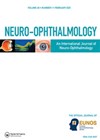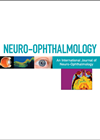
Journal Reviews
A case presentation of morning glory disc anomaly and peripapillary staphyloma
The purpose of this paper is to present a case of an 18-month-old girl initially presenting with strabismus. Fixation of the affected eye was intermittent with a relative afferent pupillary defect. A fundus photography of the affected left eye showed...
A case series of acquired esotropia in cerebellar disease
Acquired esotropia in cerebellar disease is well described but under-recognised. The pathogenesis of cerebellar esotropia is controversial. It is suggested it may be a result of disruption to central vestibular pathways. This article reports a case series of seven adults...






